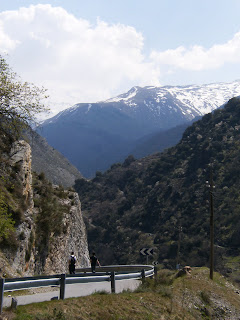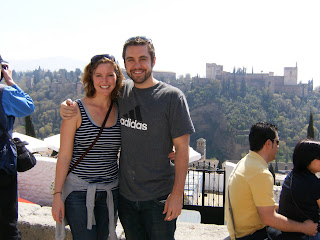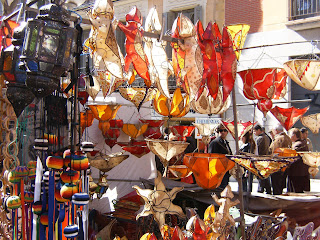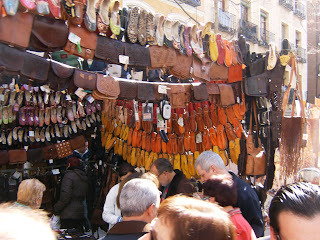We studied the map carefully and, since the two villages were close together, decided to try to visit both in one afternoon.
After a truly wild wild goose chase across town to the bus station, back into the heart of Granada where we began, and from bus stop to bus stop speaking to strangers in our poor Spanish, we finally boarded a bus to Pinos Genil. As a matter of fact we double checked with both the lit display on the front of the bus and the driver himself that the bus was, indeed, making its final stop in Pinos Genil.
We wound around uphill, hugging the edges of cliffs overlooking amazing views of lakes and groves far below. The Sierra Nevada mountain loomed ahead, closer than we could have imagined, snow and cloud capped. The bus finally pulled into the village and stopped, and I breathed a sigh of relief. 2nd Best Rice in Spain, here we come!

Only we found ourselves in Güéjar Sierra, which was the REAL final stop of this bus line. We had passed through Pinos Genil on our climb uphill! No great loss, however, as we decided to track down the recommended restaurant and eat lunch there. We had 3 hours before the bus returned (before a 3 hour gap with no transportation in or out).

We asked a very cheerful woman directions. She said the restaurant was great, and it was thataway. We walked thataway for a while and then double checked with another woman to make sure we were on the right track. Yup, continue thataway, she said, and we did. We walked thataway for a long time, until we noticed the village was behind us and we were in horse and goat country. We came across a little old man, who once again said, yup, thataway, just keep walking.


Well...perhaps 3 kilometers later, down a steep hill on foot, we finally spotted the restaurant below, baking in the blistering sun. We found a seat and immediately ordered water!
The food was wonderful, the views were great, and the atmosphere was unforgettable. We sat outdoors in the restaurant's gravel yard under the trees alongside the river. We stuffed ourselves full with chorizo, morcilla, potatoes fried with green peppers, sauteed chicken, seasoned sausage, pork chop, and fried egg. MMMM, a memorable meal!!!!!

After coffee I glanced at my watch and realized we only had 25 minutes to make it back UP the hill, into the village, and to the bus stop before we were stranded for an additional 3 hours. We quickly paid, of course forgetting to ask for an extra water, and began power walking, taking hiker's trails to shorten the distance when possible. We were walking quickly enough that we powered past a couple of huffing and puffing cyclists. Finally we broke into a run, emerging into the plaza just as the clock tower struck 3:00. We jumped on the leaving bus and were on our way (and feeling pretty proud of our uphill athletic abilities, might I add)!

We ultimately decided not to stop in Pinos Genil, for who can partake in Spain's Second Best Rice when you are full, hot, sweaty, and tired? It will have to wait for another day.
































